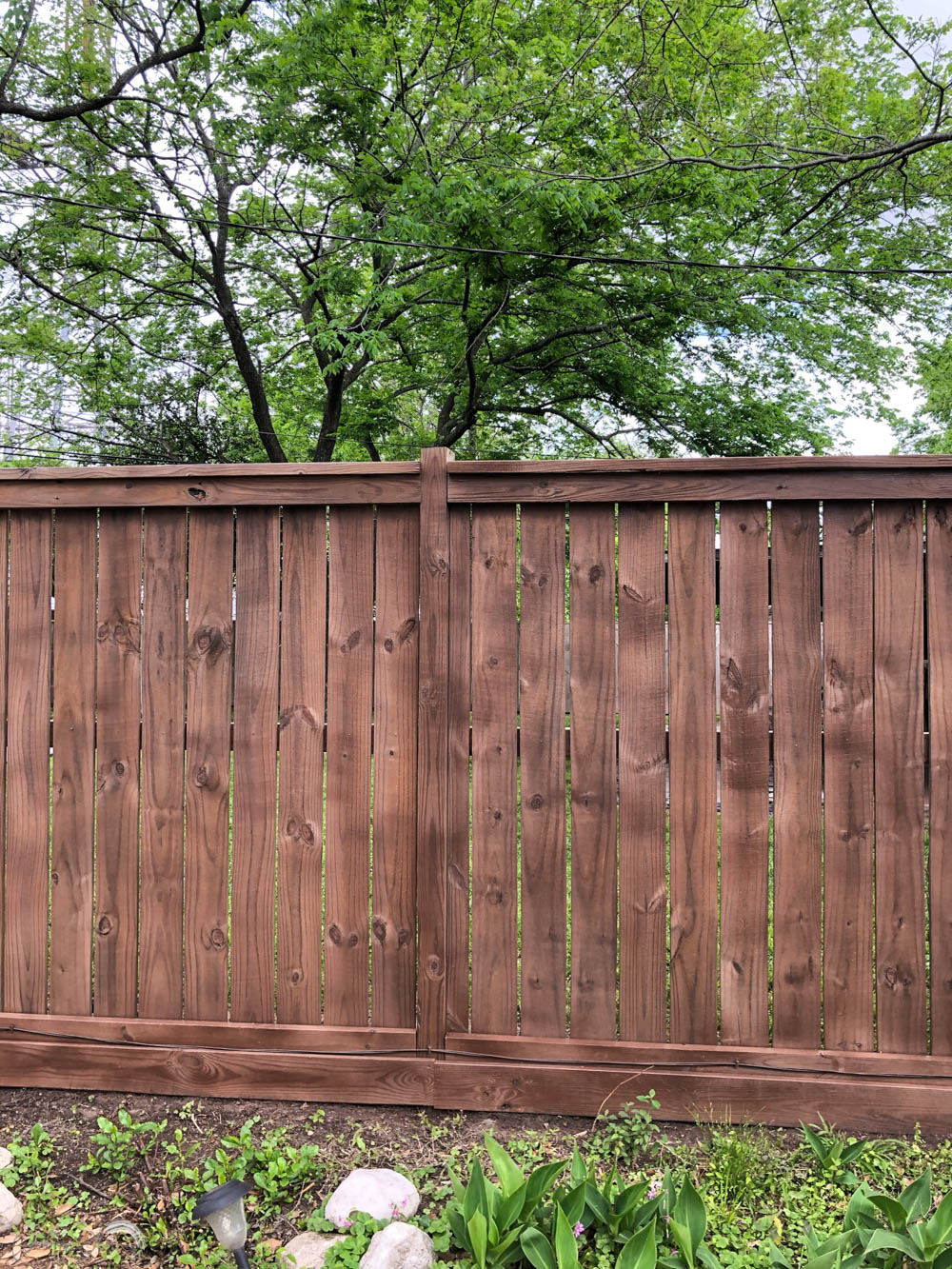Trustworthy Fence Staining Service: Protect and Revitalize Your Fence!
Trustworthy Fence Staining Service: Protect and Revitalize Your Fence!
Blog Article
Exactly How to Pick the Right Fencing Discoloration for Your Residential Or Commercial Property
When it involves improving the appearance and longevity of your residential property's fencing, selecting the ideal stain is an essential choice that requires mindful consideration. With a myriad of options readily available out there, each providing to different wood kinds, colors, and transparency levels, the procedure can rapidly come to be overwhelming. Nevertheless, making an educated selection can substantially impact the overall looks and long life of your fencing. Just how can you ensure that you pick the ideal fence stain that aligns with your building's style and maintenance requirements? Allow's explore some crucial variables to lead you in this decision-making procedure.
Understanding Timber Types
To pick the appropriate fence discolor, it is vital to have a detailed understanding of the different kinds of timber typically used for fencing. When picking a fence tarnish, it is vital to take into consideration the type of timber being utilized to guarantee compatibility and ideal security. Comprehending the features of various wood types will certainly aid you make a notified decision when it comes to choosing the appropriate fence discolor for your residential or commercial property.
Selecting the Right Color
Choosing an ideal color for your fence stain is a vital decision that substantially influences the general aesthetic charm of your residential or commercial property. Lighter colors such as whites or light grays can make a fencing appear bigger and add a touch of sophistication to your property. Eventually, the ideal shade selection will certainly boost the elegance of your fencing and elevate the general visual appeal of your home.

Taking Into Consideration Transparency Levels
When picking the best color for your fence stain, another essential facet to consider is the level of openness that will best fit your property's aesthetic and upkeep requirements. Transparency degrees in fence discolorations normally fall into three categories: transparent, semi-transparent, and solid. Consider the degree of exposure your fencing faces, the preferred upkeep regularity, and the visual you wish to achieve when choosing the right openness degree for your fence stain.
Examining Maintenance Demands
Considering the durability and maintenance of your fencing, reviewing the maintenance requirements is critical in identifying the most suitable fence stain for your residential property. The level of upkeep needed for your fencing can vary relying on aspects such as the sort of wood, climate condition in your location, and your personal choices.
When examining maintenance demands, it is vital to take into consideration the longevity of the fencing stain. Some stains need even more constant reapplication than others, so selecting a discolor with additional info a longer life expectancy can help minimize the total upkeep needs of your fencing (Fence Staining). Additionally, variables such as resistance to UV rays, water, and mold can affect how often you need to re-stain your fence

Evaluating Samples Prior To Application
Prior to applying any type of fence tarnish, it is suggested to carry out sample examinations to ensure compatibility with the timber and wanted visual end result (Fence Staining). Examining examples permits you to analyze how the stain will interact with the specific kind of wood used in your fencing, as different timbers can soak up stains differently. To begin, pick a little unnoticeable location of the fence to apply the tarnish samples. It is advised to test numerous discolor choices on this area to compare colors and surfaces. Think about how the stain looks when completely dry, as it might appear various from its wet application. Additionally, observe how the discolor matches the existing components in your outdoor space, such as landscaping or the color of your home. Keep in mind of how the tarnish stands up to weather problems like sunlight and moisture. By testing samples prior to complete application, you can make an enlightened decision that boosts the overall appearance of your home while safeguarding the wood effectively.
Verdict
Finally, selecting the suitable fence tarnish for your property entails understanding the timber kind, picking the best shade, considering openness degrees, assessing upkeep needs, and screening samples prior to application (Fence Staining). By taking these aspects right into consideration, you can ensure that your fence discolor enhances your building while providing the essential protection and toughness. Make an informed decision to improve the look and long life of your fence
Report this page